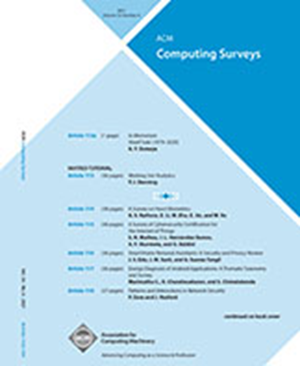Underwater Optical Object Detection in the Era of Artificial Intelligence: Current, Challenge, and Future
IF 28
1区 计算机科学
Q1 COMPUTER SCIENCE, THEORY & METHODS
引用次数: 0
Abstract
Underwater optical object detection (UOD), aiming to identify and localise objects in underwater optical images or videos, presents significant challenges due to the optical distortion, water turbidity, and changing illumination in underwater scenes. In recent years, artificial intelligence (AI) based methods, especially deep learning methods, have shown promising performance in UOD. To further facilitate future advancements, we comprehensively study AI-based UOD. In this survey, we first categorise existing algorithms into traditional machine learning-based methods and deep learning-based methods, and summarise them by considering learning strategies, experimental datasets, learning stages, employed features or techniques, and underlying frameworks. Next, we discuss the potential challenges and suggest possible solutions and new directions. We also perform both quantitative and qualitative evaluations of mainstream algorithms across multiple benchmark datasets, taking into account the diversity and biases in experimental setups. Finally, we introduce two off-the-shelf detection analysis tools, Diagnosis and TIDE, which will examine the effects of object characteristics and various types of errors on detector performance. These tools help identify the strengths and weaknesses of different detectors, providing insights for further improvement. The source code, trained models, utilized datasets, detection results, and detection analysis tools are publicly available at https://github.com/LongChenCV/UODReview and will be regularly updated.人工智能时代的水下光学目标检测:现状、挑战与未来
水下光学目标检测(UOD)旨在识别和定位水下光学图像或视频中的目标,但由于水下场景中的光学畸变、水浑浊和光照变化,UOD面临着重大挑战。近年来,基于人工智能(AI)的方法,特别是深度学习方法,在UOD中表现出了良好的性能。为了进一步促进未来的发展,我们全面研究了基于ai的UOD。在本调查中,我们首先将现有算法分为基于传统机器学习的方法和基于深度学习的方法,并通过考虑学习策略、实验数据集、学习阶段、采用的特征或技术以及底层框架对它们进行总结。接下来,我们将讨论潜在的挑战,并提出可能的解决方案和新的方向。我们还在多个基准数据集上对主流算法进行定量和定性评估,同时考虑到实验设置中的多样性和偏差。最后,我们介绍了两种现成的检测分析工具,诊断和潮汐,这将检查目标特征和各种类型的错误对检测器性能的影响。这些工具有助于识别不同检测器的优点和缺点,为进一步改进提供见解。源代码、训练模型、使用的数据集、检测结果和检测分析工具可在https://github.com/LongChenCV/UODReview上公开获取,并将定期更新。
本文章由计算机程序翻译,如有差异,请以英文原文为准。
求助全文
约1分钟内获得全文
求助全文
来源期刊

ACM Computing Surveys
工程技术-计算机:理论方法
CiteScore
33.20
自引率
0.60%
发文量
372
审稿时长
12 months
期刊介绍:
ACM Computing Surveys is an academic journal that focuses on publishing surveys and tutorials on various areas of computing research and practice. The journal aims to provide comprehensive and easily understandable articles that guide readers through the literature and help them understand topics outside their specialties. In terms of impact, CSUR has a high reputation with a 2022 Impact Factor of 16.6. It is ranked 3rd out of 111 journals in the field of Computer Science Theory & Methods.
ACM Computing Surveys is indexed and abstracted in various services, including AI2 Semantic Scholar, Baidu, Clarivate/ISI: JCR, CNKI, DeepDyve, DTU, EBSCO: EDS/HOST, and IET Inspec, among others.
 求助内容:
求助内容: 应助结果提醒方式:
应助结果提醒方式:


